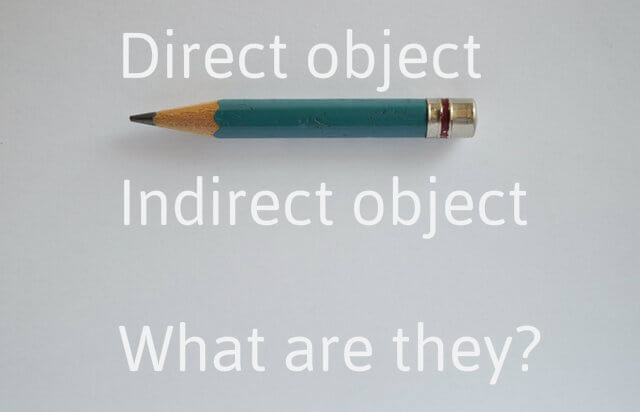Direct and indirect object in Spanish

In this post you'll learn what are the direct and the indirect object, and also what are the direct and indirect object pronouns and how to use them, where to put them, etc.
Let's jump right in!
Direct object
The direct object is the "what" or "who" is affected by the verb".
¿Vas a vender el coche? - Are you going to sell the car? The direct object is THE CAR
¿Ves a tu madre a diario? - Do you see your mom daily? The direct object is YOUR MOM
Ya tengo las entradas - I already have the tickets
The direct object is THE TICKETS
The direct object can be replaced by a direct object pronoun that would agree to it in gender and number:
- Me
- Te
- Lo, la
- Nos
- Os
- Los, las
So the previous sentences would look like these:
¿Vas a venderlo? - Are you going to sell it?
LO refers to the car (masculine singular)¿La ves a diario? - Do you see her daily?
LA refers to your mom (feminine singular)Ya las tengo - I already have them
LAS refers to the tickets (feminine plural)
It and they are the most common ones (lo,la,los,las in Spanish) but here are examples with other direct object pronouns:
Me ayudas mucho - You help me a lot.
Me refers to "me".¿Vais a delatarnos? - Are you going to give us away? Nos refers to "us".
For more help with the confusion between direct and indirect object for people, check out this post.
Indirect object
The indirect object would answer to "to whom", "for whom" or "to what". Usually is a person, but not always.
The pronouns are the same as the direct object ones apart from it/he/she form and they form:
- Me
- Te
- Le
- Nos
- Os
- Les
Examples:
- ¿Qué me vas a dar? - What are you going to give me?
"Me" is the person to whom you're going to give something.
In sentences with direct object:
- Voy a enseñarles la casa - I'm going to show them the house.
Les refers to "them", the people to whom I'm going to show the house.
The house, is the thing I'm going to show, so the direct object.
Another example, where the indirect object is not a person, but a thing:
- Le voy a poner una piscina - I'm going to put (to it) a swimming pool.
The le refers to the house we talked before, it's the thing to which you're going to do something.
The swimming pool is the direct object, the thing you're going to put somewhere.
Position of the pronouns
The indirect object pronoun goes:
1- Before the conjugated verb - That means a verb in present, past or future, conjugated depending on the person: I, you, he,she or it, we, you guys and they.
Ex: Duermo, saliste, voy, compraré, tendría...
You have a conjugated verb in 99% of sentences, so it's probably going to be there :)
2- Also you can put it right after,and attached to:
Infinitive - To do. It ends in -ar, -er or -ir in Spanish. Ex: Comer, dormir, caminar...
Gerund - Doing. It ends in -ando and -iendo in Spanish. Ex: Comiendo, durmiendo, caminando...
Imperative- Do! Instruction, order or suggestion. Ex: Camina! Sal! Ven! Gira a la derecha,...
Ex:
Lávalo - Wash it! After imperative.
¿La lección? Estoy estudiándola ahora - The lesson? I'm learning it now.
or
La estoy estudiando ahora
So, either before the conjugated verb estoy or right after the gerund estudiando.
- ¿Has visto mi abrigo? Tengo que llevarlo, hace frío - Have you seen my coat? I have to wear it, it's cold.
or Lo tengo que llevar
So, either before tengo or right after the infinitive, llevar.
Direct and indirect objects are hard sometimes, so take it with time and patience, practice lots and the best of luck!! :D ¡Mucha suerte!